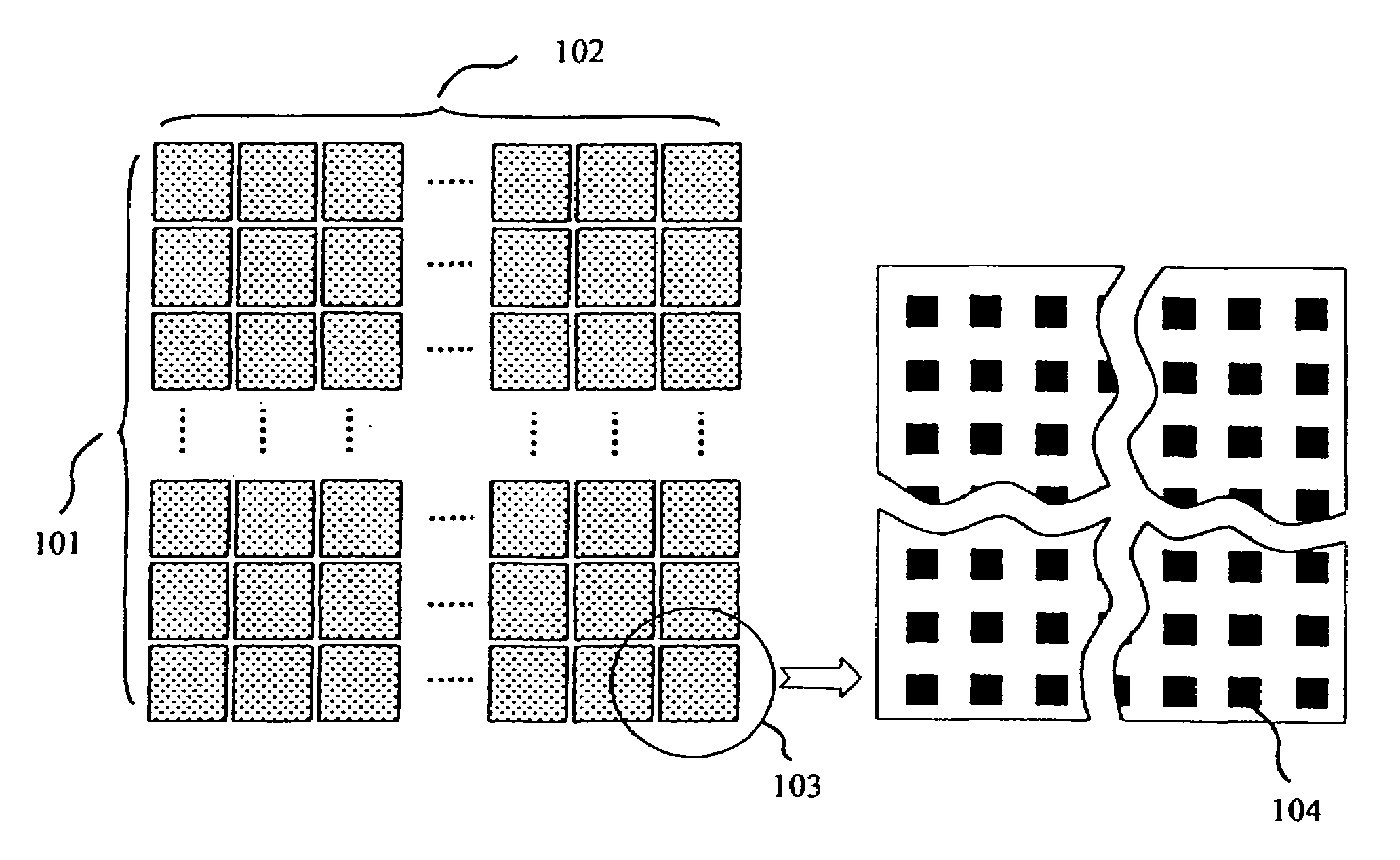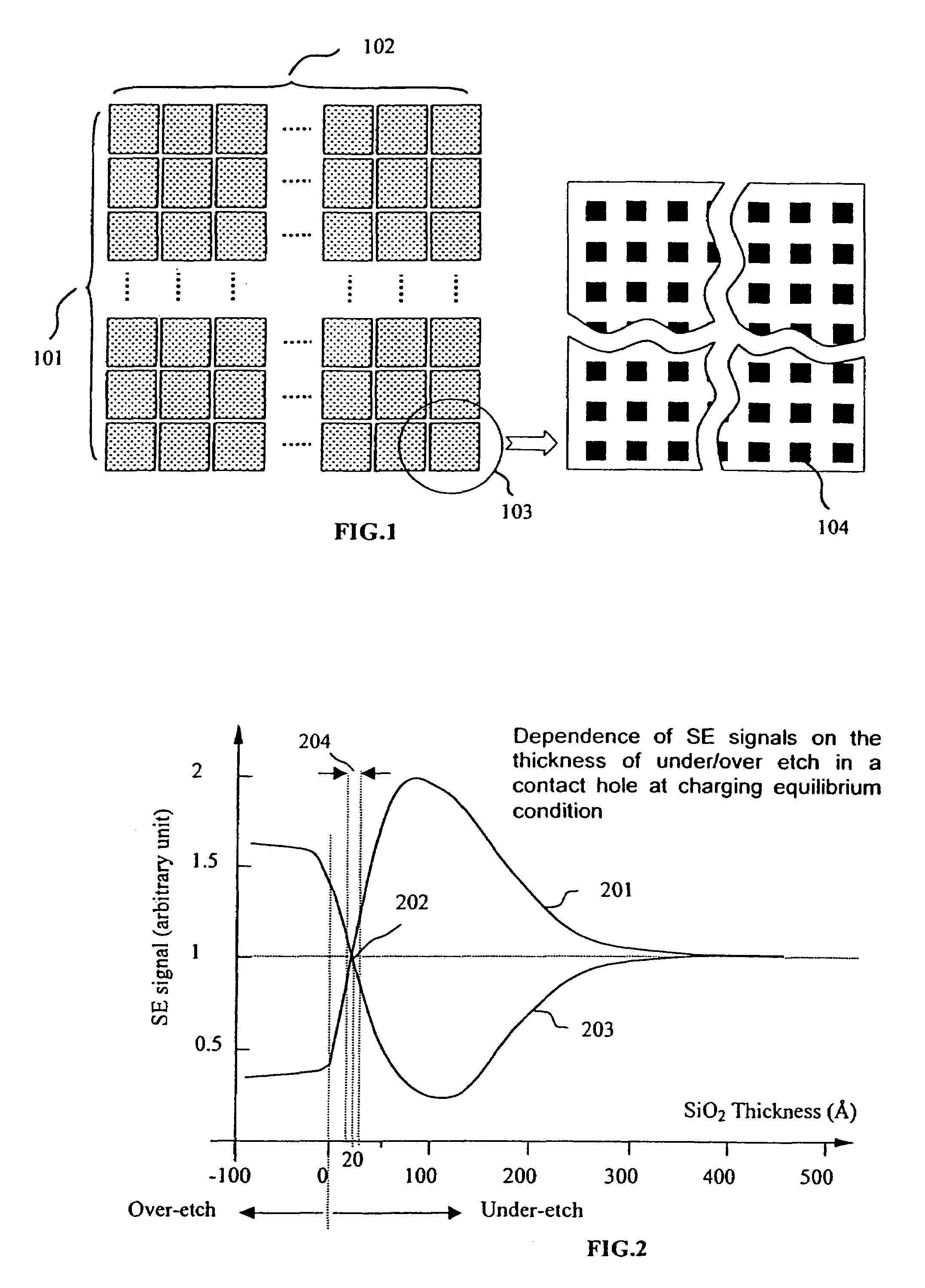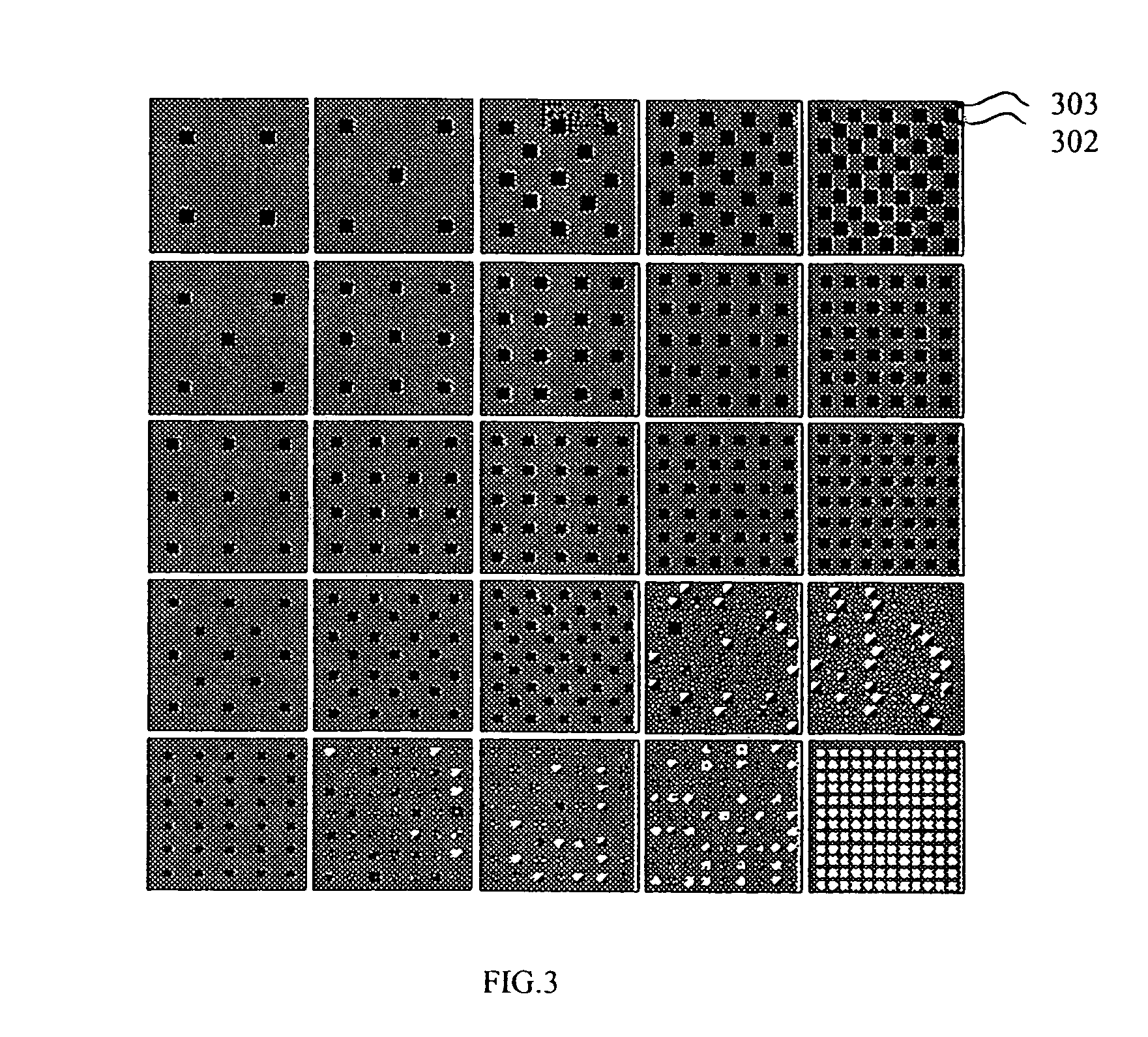Method for in-line monitoring of via/contact holes etch process based on test structures in semiconductor wafer manufacturing
a technology of contact etching and test structure, which is applied in the direction of individual semiconductor device testing, semiconductor/solid-state device testing/measurement, instruments, etc., can solve the problems of reducing the thickness of over-etch margins, affecting the yield of the etching contact hole, and occupying a significant part of the total yield loss, etc., to achieve the effect of reducing the thickness of the over-etch margins and reducing the number of etching contact holes
- Summary
- Abstract
- Description
- Claims
- Application Information
AI Technical Summary
Benefits of technology
Problems solved by technology
Method used
Image
Examples
Embodiment Construction
[0023]FIG. 1 depicts an embodiment of a via / contact test structure consisting of arrays 103 with increasing via / contact size along the row 101 direction and increasing densities or pattern factor (exposed Si area / wafer area) along the column 102 direction. Each via / contact array consists of via / contact holes of a single size and density (pattern factor), as 104 indicates, and is etched simultaneously with the via / contacts in the functional dies into a dielectric layer of similar thickness and topography for making contact to the buried conductive layer or active regions such as source / drain. The aim of the embodiment is to have the etching process impose different etch rates, as the result of the microloading effect, and / or RIE lag, over the variant holes and to get uneven etch over the structure range from under-etch to over-etch. Other forms or modifications and / or embodiments may also meet this purpose and are thus intended to be covered by this disclosure. The embodiment of such...
PUM
| Property | Measurement | Unit |
|---|---|---|
| thickness | aaaaa | aaaaa |
| energy | aaaaa | aaaaa |
| thickness | aaaaa | aaaaa |
Abstract
Description
Claims
Application Information
 Login to View More
Login to View More - R&D
- Intellectual Property
- Life Sciences
- Materials
- Tech Scout
- Unparalleled Data Quality
- Higher Quality Content
- 60% Fewer Hallucinations
Browse by: Latest US Patents, China's latest patents, Technical Efficacy Thesaurus, Application Domain, Technology Topic, Popular Technical Reports.
© 2025 PatSnap. All rights reserved.Legal|Privacy policy|Modern Slavery Act Transparency Statement|Sitemap|About US| Contact US: help@patsnap.com



